Blogs

Mastering Beryllium Copper for Plastic Injection and Moulding Inserts: An In-Depth Tutorial
Introduction
In the realm of industrial manufacturing, beryllium copper has emerged as a pivotal material, particularly in the domain of plastic injection moulding. Renowned for its exceptional strength, thermal conductivity, and corrosion resistance, this alloy is not just a choice but a necessity for procurement managers aiming to enhance production efficiency and product quality.
As industries evolve, understanding the properties and applications of beryllium copper becomes essential for strategic decision-making. This article delves into the myriad advantages of beryllium copper, exploring its practical applications, optimal usage techniques, and critical considerations for selecting the right grade.
Additionally, it addresses the financial implications and regulatory compliance issues associated with sourcing this valuable material. By equipping procurement professionals with expert insights, this comprehensive overview aims to empower informed choices that can significantly impact manufacturing outcomes.
Understanding Beryllium Copper: Properties and Applications in Moulding
Beryllium copper for plastic injection and moulding inserts is a highly regarded alloy in the industrial sector, particularly for its remarkable properties that make it ideal for plastic injection molding and associated applications. The key characteristics of DOMADIA Beryllium Alloy, compliant with international standards such as UNS and ASTM, include:
- High Strength: Beryllium alloy stands out for its superior strength and hardness compared to other metal alloys, essential for withstanding the substantial pressures encountered during the moulding process.
- Thermal Conductivity: This alloy boasts excellent thermal conductivity, which facilitates efficient heat transfer. This property is critical in reducing cycle times in injection moulding, thus enhancing production efficiency.
- Corrosion Resistance: The inherent durability of this alloy minimizes wear over time, ensuring consistent performance and longevity in demanding environments.
Applications of this alloy in moulding are diverse and impactful, including:
- Injection Moulding Inserts: The precision of this material allows for the creation of intricate designs, making it an invaluable asset in producing complex geometries within moulds.
- Thermal Management Components: This alloy plays a crucial role in managing heat during the moulding process, safeguarding product integrity and quality.
Additionally, the Non-Sparking Wrench made from this alloy is noteworthy for its safety features, making it suitable for use in hazardous environments where spark generation must be avoided. Recent studies, such as those by Khodabakhshi et al., have examined the effects of cold working and heat treatment on the microstructure and wear behavior of Cu–Be alloy C17200, showcasing the alloy’s significant advancements. Significantly, statistical examination showed that the twin fraction diminished from 57.3% to 31.8% for STACER at 320 °C after 2 hours, highlighting the performance benefits of a specific alloy.
Additionally, statistical examination employing ANOVA has validated the benefits of a specific metal over alternative alloys, especially regarding performance and utility effectiveness. As noted by Lothar Wagner, Chair of Applied Materials Science and Engineering, his research emphasizes the microstructure/property relationships that are pivotal in enhancing fatigue performance and surface treatment. Additionally, a case study titled ‘Residual Stress and Service Performance Testing’ evaluated the deployment stability and anti-interference ability of beryllium copper components in space environments, confirming their effective performance.
For procurement managers, it is essential to consider pricing and inventory details of Beryllium Copper Strips, which are competitively priced to ensure value for projects. Additionally, a broader product range of Beryllium Copper is available, serving various industrial uses. Resources such as blogs and articles on the Beryllium Copper Non-Sparking Wrench can provide further insights into safety applications and best practices.
These insights enable procurement managers to make knowledgeable choices when selecting alloys, particularly beryllium copper for plastic injection and moulding inserts, ensuring they utilize the finest materials for optimal outcomes in plastic injection molding.
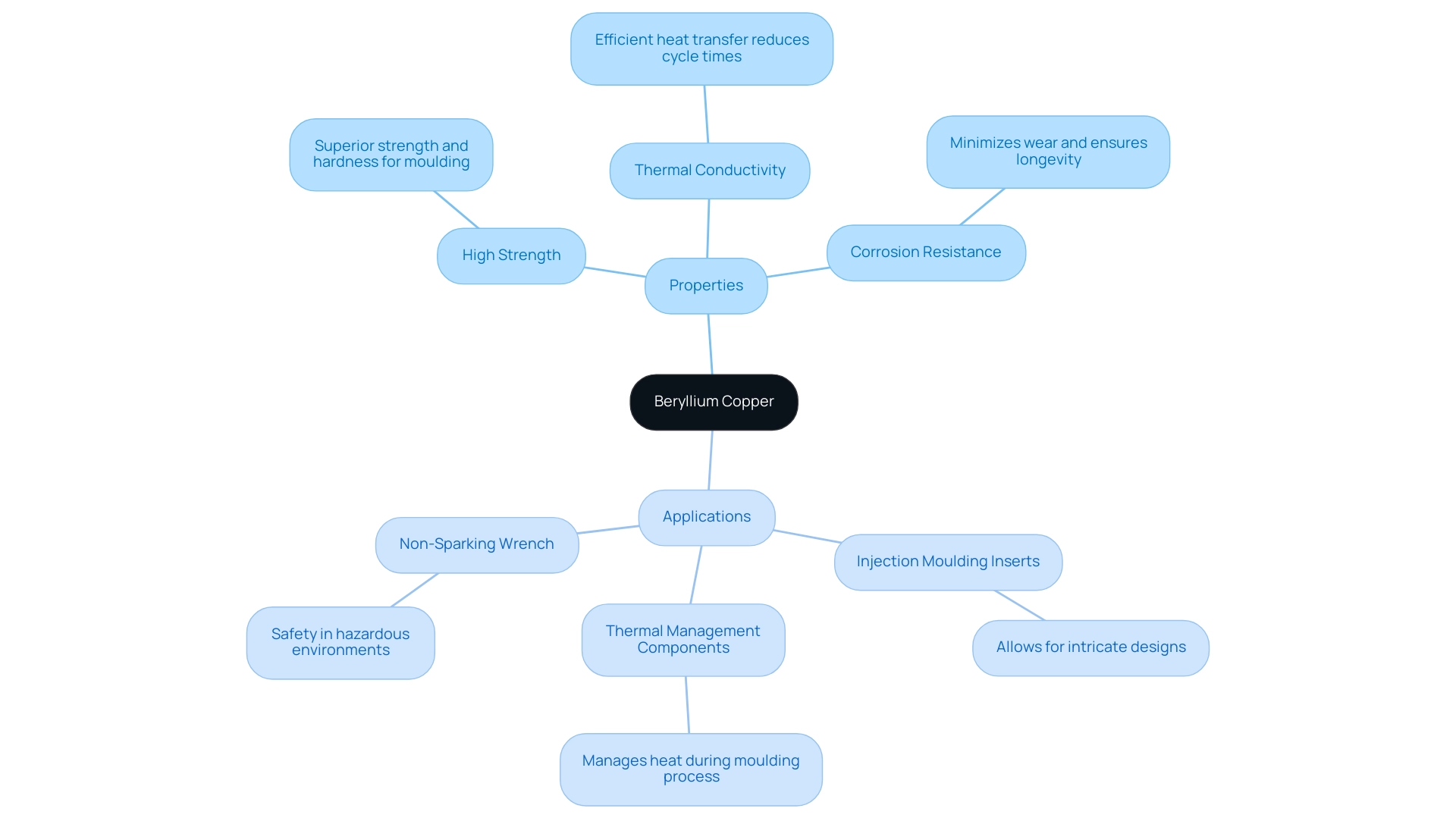
Techniques for Utilizing Beryllium Copper in Plastic Injection Moulding
To effectively utilize the alloy in plastic injection molding, it is essential to adopt the following techniques:
- Optimal Temperature Control: Precise temperature management during the injection process is crucial. The exceptional thermal conductivity of this alloy enables swift heat transfer, greatly improving the cooling process and reducing cycle durations, which is essential in high-efficiency manufacturing settings. For instance, with 15 components produced each month, effective temperature management can result in significant enhancements in output efficiency while demonstrating Domadia’s dedication to high-quality metal solutions.
- Tooling Design: Integrating beryllium copper for plastic injection and moulding inserts into mold designs takes advantage of its strength, conductivity, and corrosion resistance. This approach not only improves the durability of molds but also enables the creation of intricate designs that can enhance product quality. As highlighted in the case study titled ‘The Moldmaker’s Advantage,’ utilizing beryllium copper for plastic injection and moulding inserts in mold design leads to reduced cycle times and improved quality control in the manufacturing of plastic parts, showcasing the innovative manufacturing practices that Domadia employs.
- Injection Pressure Management: Adjusting injection pressures to the unique properties of the chosen alloy is essential. Effective pressure management is essential to avoid defects in the final product, ensuring high manufacturing standards. Domadia’s leadership in providing high-performance metal plates further supports this goal.
- Post-Processing Techniques: Implementing post-processing treatments, such as heat treatment, can further enhance the mechanical properties of the alloy used in molds, thereby optimizing performance in demanding applications. This is a testament to Domadia’s rigorous quality control measures.
- Regular Maintenance: Conducting regular maintenance on molds is key to prolonging their lifespan and sustaining quality output. Owing to the remarkable wear resistance of this alloy, it is especially appropriate for high-volume manufacturing situations. Domadia highlights outstanding customer service to aid in sustaining these tools for optimal performance.
By incorporating these methods into operations, procurement managers can not only maximize the use of beryllium copper for plastic injection and moulding inserts but also promote improved performance and cost-effectiveness in plastic injection molding procedures. As highlighted by industry expert Jeff from a leading aerospace firm, employing appropriate methods and precautions is crucial, especially in high-stakes settings. He observes that while machining a specific metal, dry collection of chips has demonstrated security in their processes, emphasizing the significance of strict precautionary measures, particularly when dealing with substances that necessitate careful oversight.
For more information on how Domadia’s high-quality solutions can fulfill your project requirements, reach out to us today and experience the difference we can create in your operations.
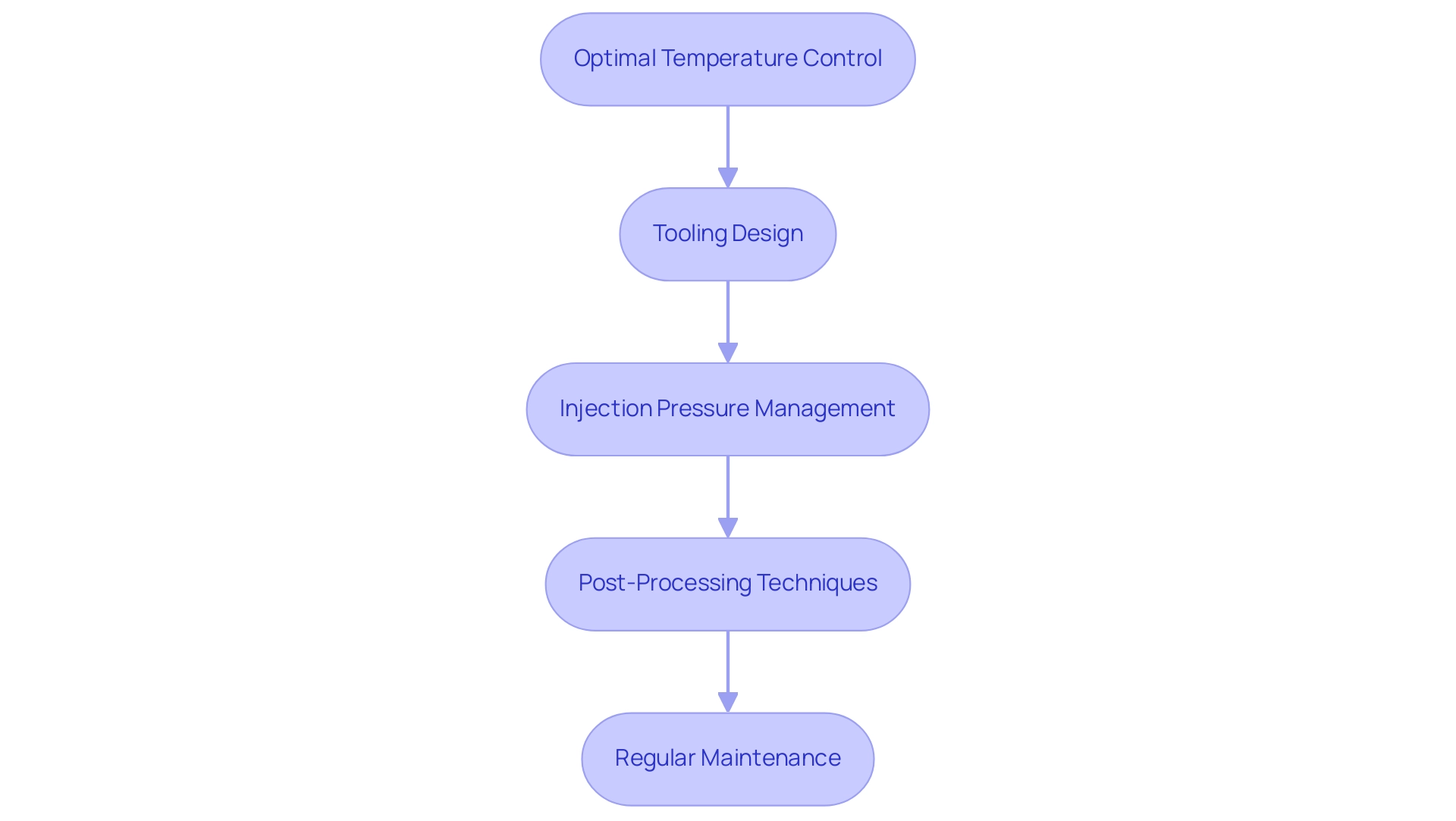
Selecting the Right Grade of Beryllium Copper for Your Application
Choosing the suitable grade of beryllium copper for plastic injection and moulding inserts necessitates a thorough evaluation of your application’s particular requirements, particularly taking into account regulatory standards. As per OSHA, particles of this element in an industrial environment should not surpass 0.2 µg/mm (Time Weighted Average), prioritizing precaution in material choice. Given the potential risks in explosive environments, the use of Non-Sparking Tools, particularly those made from beryllium alloy, is crucial.
Non-sparking tools are essential for ensuring safety in high-risk scenarios, providing a reliable alternative in environments where ignition sources must be minimized.
Consider the following options:
- C17200 (Alloy 25): Renowned for its exceptional strength and hardness, this alloy is optimal for high-performance uses where durability is paramount. Its age-hardened characteristics guarantee that it remains one of the strongest metal alloys available, making it ideal for challenging environments, as emphasized in case studies illustrating its appropriateness for high-strength uses.
- C17510 (Alloy 10): Distinguished by its superior thermal conductivity, this grade excels in scenarios where efficient heat transfer is crucial. Its capability to disperse heat rapidly renders it appropriate for complex mould designs necessitating consistent temperature control.
- C17500 (Alloy 2): This alloy achieves a harmonious balance between strength and conductivity, making it adaptable for general molding uses. It is especially useful in scenarios where both attributes are essential but not extreme, particularly when evaluating beryllium copper for plastic injection and moulding inserts, along with critical factors such as required strength, thermal performance, and resistance to corrosion.
Beryllium bronze tools, especially DOMADIA Beryllium Bronze, adhere to global standards like UNS and ASTM, making them suitable for crucial uses demanding high strength, particularly in settings where non-sparking characteristics improve security. The protective attributes of the alloy wrenches, including their capability to avoid sparks while in operation, further emphasize their significance in non-sparking uses.
Working with suppliers who can offer detailed specifications and insights into the latest trends in copper alloys will further improve your decision-making process. Furthermore, it is essential to recognize that the National Toxicology Program identifies this element as a carcinogenic substance, emphasizing the necessity of careful handling and selection of materials to ensure protection in the workplace. This comprehensive approach will help ensure that you choose the most effective material, such as beryllium copper for plastic injection and moulding inserts, for your molding needs, while also considering the safety and compliance aspects essential for procurement managers.
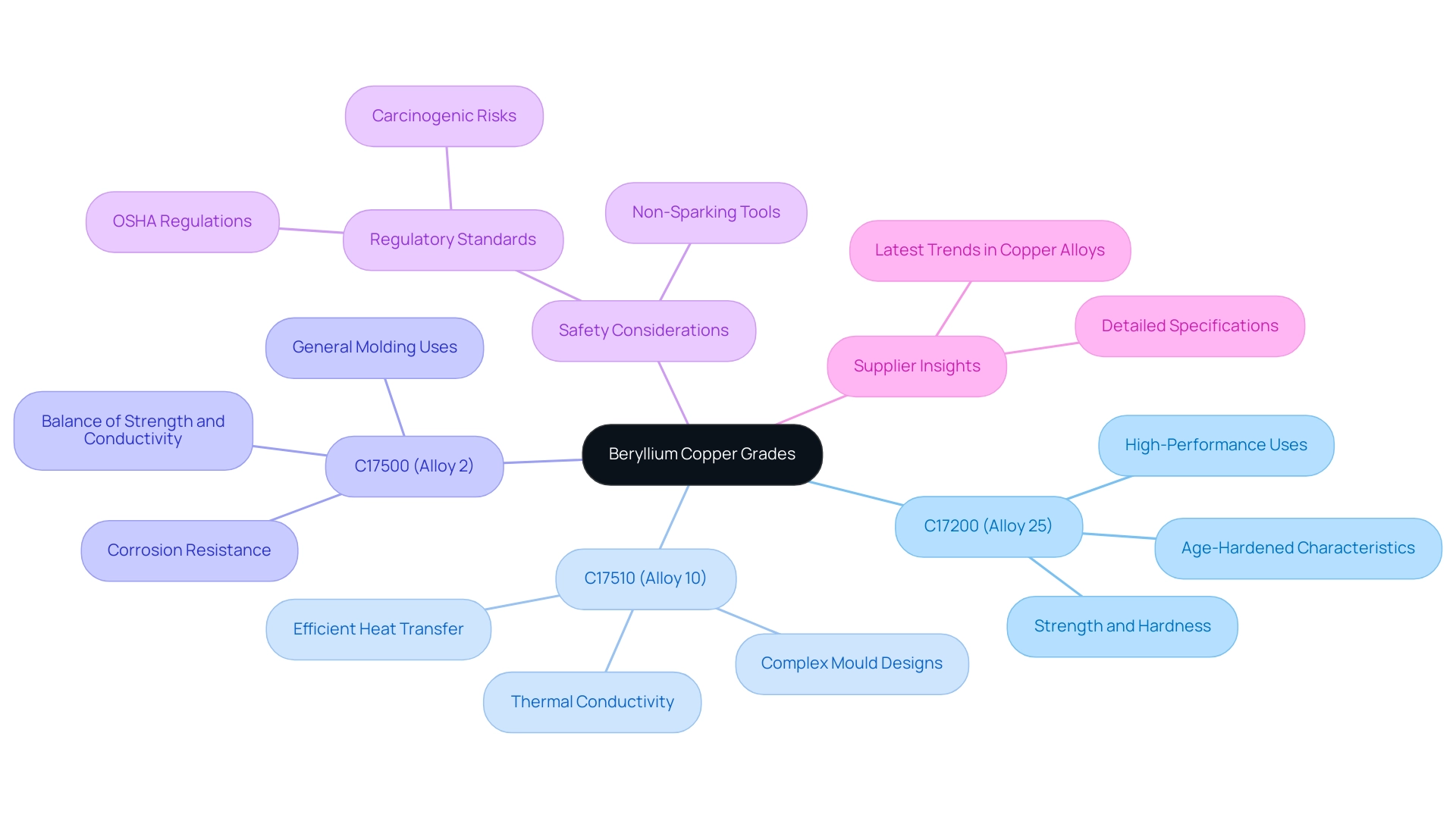
Cost Considerations in Sourcing Beryllium Copper
When procuring an alloy, it is essential to assess several critical cost factors that can significantly influence your procurement strategy:
Market Fluctuations: The prices of the alloy are influenced by global demand and supply dynamics. Staying informed about market trends is essential; for example, recent reports suggest that high costs and the emergence of alternative alloys, such as aluminum and titanium, may influence the market adoption of this metal. At Domadia, we aim to provide fair and transparent pricing for all scrap transactions involving a specific alloy, ensuring that our rates stay competitive and appealing amid these fluctuations. Our pricing strategies include regular market assessments and adjustments based on supplier negotiations, which help us maintain our competitive edge. Understanding these dynamics allows procurement managers to anticipate price changes effectively. The consultation rating of 4.8 from industry analysis underscores the importance of informed decision-making in this volatile market.
Supplier Relationships: Developing and nurturing long-term relationships with suppliers can yield advantages such as improved pricing and more favorable contract terms. Interacting with prominent participants in the alloy market, including Materion and Aviva Metals, can offer perspectives on optimal practices that improve collaboration and negotiation results. These companies are some of the foremost market players, and leveraging their expertise can be beneficial for procurement managers. For example, maintaining a consistent dialogue with suppliers can lead to better insights into pricing trends and potential discounts for bulk orders.
Volume Discounts: If your operation requires large quantities of a specific alloy, negotiating for bulk purchasing discounts is a wise strategy. Suppliers often provide price incentives for higher volume orders, which can substantially lower overall costs.
Quality vs. Cost: Although opting for cheaper alternatives may seem financially appealing, it is crucial to prioritize quality in your sourcing decisions. Investing in high-quality alloys ensures long-term performance and decreases the chances of expensive replacements or failures, ultimately resulting in more sustainable operational practices.
Additionally, utilizing analytical frameworks such as PESTEL and Porter analysis can offer valuable insights into market position and external factors influencing the industry. This strategic approach aids procurement managers in understanding market attractiveness and making informed sourcing decisions.
Moreover, exploring related high-temperature materials, such as electrical insulation papers and heat protection fabrics, can enhance your procurement strategy by diversifying your supply chain. These materials not only enhance certain alloys in applications but also offer extra choices for procurement managers aiming to improve their sourcing strategies.
By thoroughly considering these cost factors, including market demand and purity, and leveraging insights from industry analyses, procurement managers can formulate more effective sourcing strategies that align with their budgetary objectives while ensuring the reliability and performance of their materials.
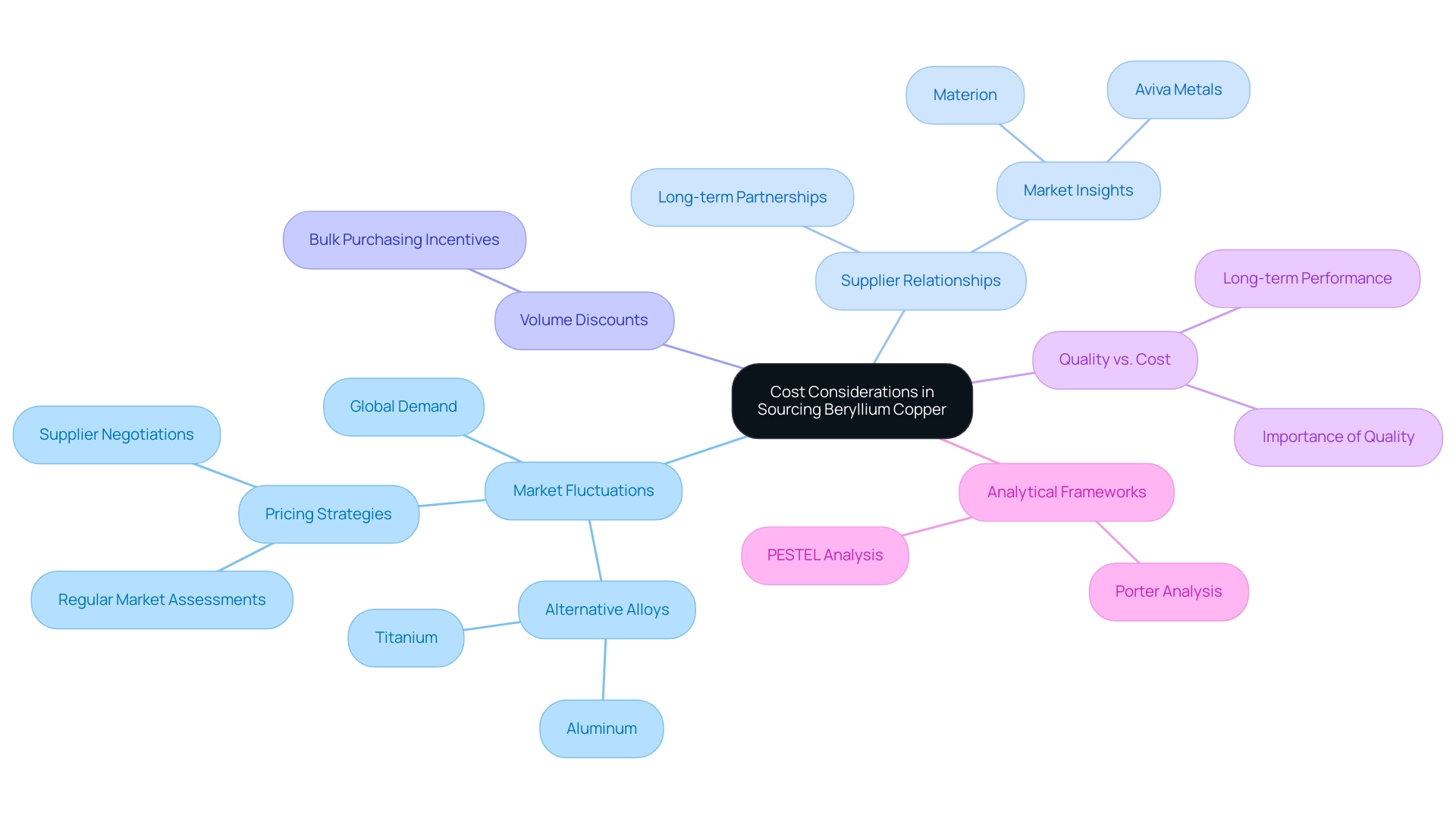
Regulatory and Compliance Issues in Using Beryllium Copper
When working with beryllium alloys and non-sparking tools, procurement managers must prioritize the following regulatory considerations:
OSHA Regulations: It is essential to stay informed about the Occupational Safety and Health Administration (OSHA) regulations, which set forth permissible exposure limits (PEL) and short-term exposure limits (STEL) for these materials. Proper handling is crucial, as exceeding these limits can lead to significant health risks for workers. OSHA mandates that the requirements for a regulated area must be maintained as long as exposures over the PEL or STEL are reasonably expected. The use of non-sparking tools, such as specific metal wrenches, is a vital safety feature in explosive environments, minimizing the risk of ignition. Recent developments indicate that OSHA has acknowledged the necessity of providing Powered Air-Purifying Respirators (PAPRs) upon request, underscoring a proactive approach to mitigating sensitization and related diseases. Furthermore, for staff who have not been confirmed positive, a consultation with a pulmonologist may be suitable if additional supportive follow-up is not needed at that specific time, emphasizing the significance of health monitoring in the workplace.
Environmental Regulations: Compliance with local environmental regulations regarding the disposal and recycling of waste materials is mandatory. Current statistics reveal that compliance with these regulations is critical for minimizing environmental impact and ensuring safe practices in waste management. It is imperative to stay abreast of evolving environmental compliance standards, as these can vary significantly based on jurisdiction. For example, the proposed rule restricting the use of compressed air for cleaning beryllium-contaminated surfaces unless used with a ventilation system illustrates the need for effective cleaning while controlling exposure. The use of non-sparking tools also contributes to safer waste management practices in hazardous environments, making them the best option for non-sparking purposes in explosive settings.
Industry Standards: Understanding industry-specific standards is vital, as they dictate the sourcing and utilization of beryllium copper for plastic injection and moulding inserts, along with non-sparking tools in manufacturing processes. Familiarity with these standards not only ensures regulatory compliance but also positions your organization as a leader in responsible manufacturing practices. Implementing non-sparking tools, known for their superior material properties and safety advantages over traditional tools, can enhance safety protocols and demonstrate a commitment to industry best practices.
By ensuring adherence to these regulatory frameworks and utilizing non-sparking tools, which are the best alternative for non-sparking applications in explosive environments, your organization not only safeguards employee health and safety but also bolsters its reputation as a conscientious player in the industry.
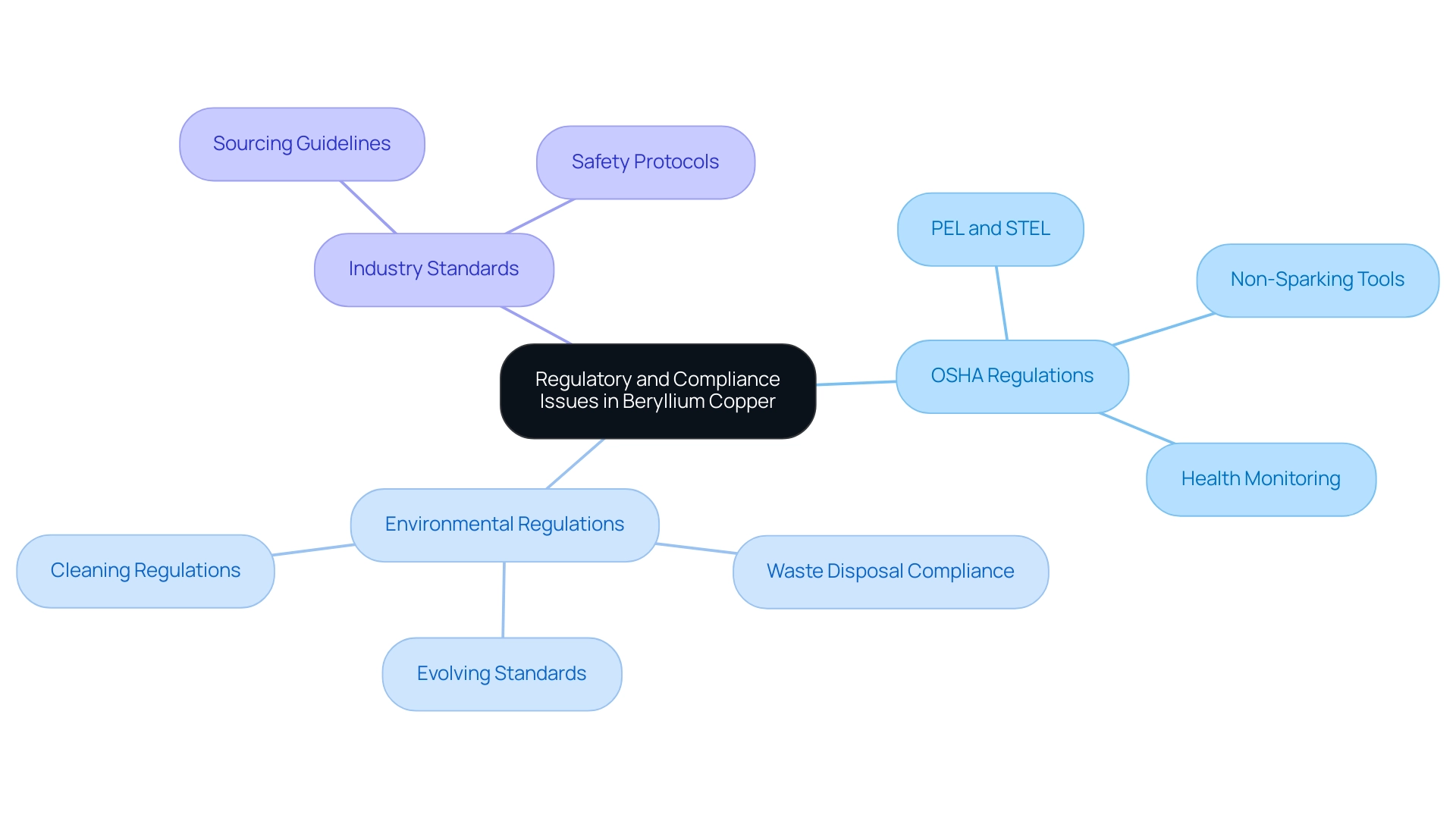
Conclusion
Beryllium copper stands as a cornerstone material in the industrial manufacturing sector, particularly for plastic injection moulding, due to its exceptional properties such as high strength, thermal conductivity, and corrosion resistance. Understanding these attributes is vital for procurement managers who strive to enhance production efficiency and product quality. This article has explored the diverse applications of beryllium copper, optimal usage techniques, and essential considerations for selecting the right grade, emphasizing its significance in achieving superior manufacturing outcomes.
The techniques highlighted—ranging from optimal temperature control to regular maintenance—are integral in maximizing the performance of beryllium copper in moulding processes. Ensuring adherence to safety regulations, particularly concerning OSHA guidelines, is paramount for managing health risks associated with beryllium exposure. Moreover, evaluating cost considerations and fostering strong supplier relationships can lead to more strategic procurement decisions, ultimately benefiting the operational efficiency and financial viability of manufacturing projects.
In conclusion, leveraging the advantages of beryllium copper not only ensures compliance with safety standards but also enhances the overall quality and durability of products in demanding environments. By equipping procurement professionals with the necessary insights and strategies, organizations can make informed choices that significantly impact their manufacturing processes and outcomes. Prioritizing quality, safety, and strategic sourcing of beryllium copper will empower companies to remain competitive in an evolving industrial landscape.




